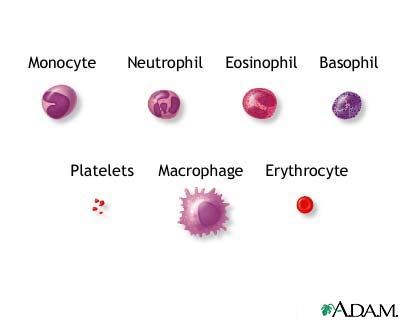Treatment
Plasma exchange (plasmapheresis) is used to remove the abnormal antibody from the blood and replace the missing enzyme.
First, you will have your blood drawn as if you were donating blood.The plasma portion of the blood will be passed through a cell separator. The remaining portion of the blood will be saved. Plasma will be added to it, and the blood will be returned to you through a transfusion.
This treatment is repeated daily until blood tests show improvement. People who do not respond to this treatment, or who have frequent recurrences, may need to have surgery to remove their spleen. Or, they may need to get drugs that suppress the immune system (such as corticosteroids).
Prognosis (Expectations)
Plasma exchange has improved the outcome of this disease. Most patients now recover completely. However, some people can die from this disease, especially if it is not found immediately. In people who don’t recover, this condition can become long-term (chronic).
Complications
- Kidney failure
- Low platelet count (thrombocytopenia)
- Low red blood cell count (caused by the premature breakdown of red blood cells)
- Nervous system problems
- Severe bleeding (hemorrhage)
- Stroke
Calling Your Health Care Provider
Call your health care provider if you have any unexplained bleeding.
Pictures & Images

-
Thrombotic thrombocytopenic purpura: Overview, Causes
-
Thrombotic thrombocytopenic purpura: Symptoms & Signs, Diagnosis & Tests
-
Thrombotic thrombocytopenic purpura: Treatment
Review Date : 3/2/2009
Reviewed By : David C. Dugdale, III, MD, Professor of Medicine, Division of General Medicine, Department of Medicine, University of Washington School of Medicine; and Yi-Bin Chen, MD, Leukemia/Bone Marrow Transplant Program, Massachusetts General Hospital. Also reviewed by David Zieve, MD, MHA, Medical Director, A.D.A.M., Inc.
